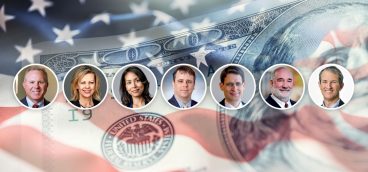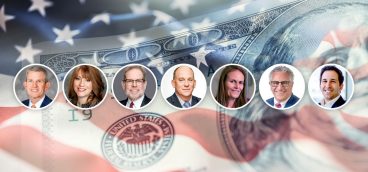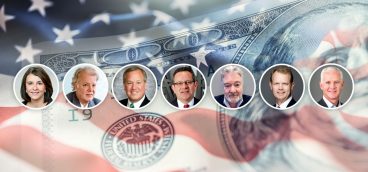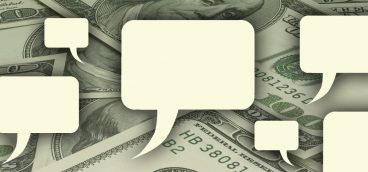Wall of Worry
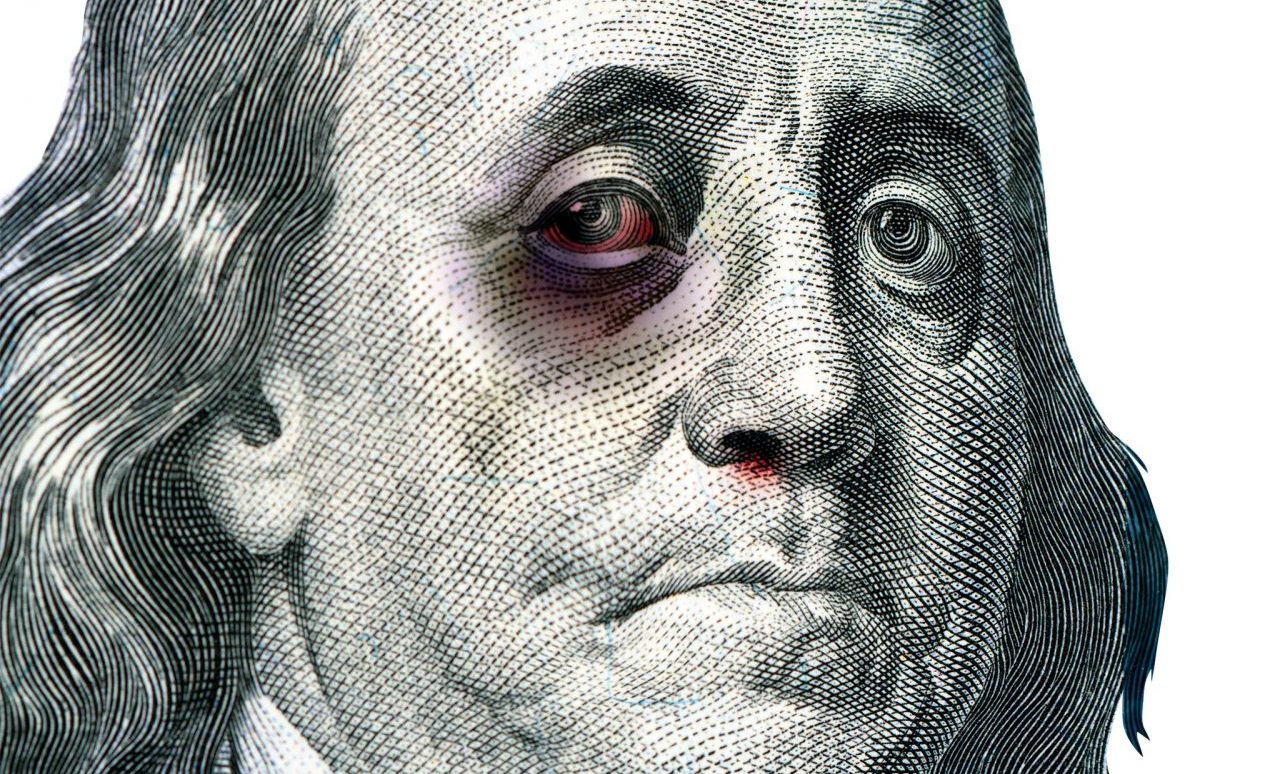
Editor’s note: Pittsburgh Quarterly asked regional financial experts to respond in 200 words or fewer to this question: What are your expectations for inflation, interest rates and U.S. equities (stocks) this year, and how are you advising clients during this continuing market volatility and uncertainty? (Responses were submitted by late April.)

LINDA DUESSEL, FEDERATED HERMES
Has the Fed done enough? Inflation is well off last year’s highs. But despite pockets of shrinking liquidity, bank deposits and money supply are still a respective $2 trillion and $3 trillion above normal balances. “Excess savings” over and above 2019 levels, owing to government largesse, stood at $1.1 trillion at the start of the year. So, lots of money (and demand) is still out there. So are jobs. Payroll and household employment rose a respective 1 million and 1.6 million in 2023’s first three months to record highs. It’s hard to see that turning on a dime when job openings are double the number of unemployed. Wage growth has moderated but remains elevated and “sticky.” Housing inflation, too. Prices there are off the boil, but inventory remains well below trend amid solid millennial demand. Bottom line: Inflation’s grind down to the Fed’s 2 percent preferred target is going to take time, if it ever gets there. That means rates will grind down slowly, too. We see lots of challenges for corporate profits and stocks. The keys are patience and picking your spots in a market stuck in a range-trade with 4,000 on the S&P 500 at its center.
ED GALLAGHER, NORTHWESTERN MUTUAL WEALTH MANAGEMENT COMPANY
Investors have been in the process of shifting from fears about inflation to fears about a recession. As a result, the first quarter saw markets swing rapidly between those two points. We do believe that the Fed’s ultra-aggressive rate hike campaign is beginning to impact the U.S. economy. Fixed-income yields are pushing lower as recession fears grow, resulting in the Fed probably slowing down earlier telegraphed rate hikes and possibly cutting rates later this year. Our view is that a recession is on the horizon and that market volatility will remain elevated as the economic contraction plays out. The Fed should then have room to ease interest rates, if needed, to help stem the depth of the economic decline. As it pertains to U.S. equities, the challenge is that the market typically bottoms before a recession ends. Times like these are difficult for investors because people tend to think they need to do “something.” It is not easy to invest in times of uncertainty. However, we know that if one invested only in times of sure certainty, they would risk missing out on substantial returns. We continue to encourage clients to revisit their goals, plans and time horizons (as opposed to timing), with a continued emphasis on diversification.


JOHN AUGUSTINE, HUNTINGTON BANK
We have been consistent in our thoughts about the U.S. economy since late 2022 — a 50/50 chance of a recession in 2023 with the Federal Reserve as the arbitrator. We still hold that view for 2023 but are starting to turn our attention to 2024. Both the Federal Reserve and Bloomberg consensus of economists currently project that the unemployment rate will rise to 4.6 percent in 2024, up from our current rate of 3.5 percent. Since WWII, there has never been a 1 percent or more rise in the unemployment rate that was not associated with a recession, hence, we will be focused on all employment reports moving forward. If employment, and the economy, do slow in 2023, we could be close to highs in the short term for both stock prices and bond yields. The question then becomes: What will the Federal Reserve do about the economic weakness they arguably created with aggressive rate hikes in 2022? The Federal Reserve is resolute in their projection that they could potentially lower their Fed Funds Rate in 2024 from around 5 percent to 4.25 percent. The Bloomberg consensus of economists sees that rate at 3.55 percent in 2024. If we do see stock prices and bond yields move sideways in the balance of 2023, we could then see both move noticeably higher in 2024 as financial conditions ease.
ALISON WERTZ, BILL FEW ASSOCIATES
As inflation continues to improve, it is apparent it was largely the result of the government injecting trillions of dollars into the economy in tandem with unprecedented supply chain disruptions: The definition of inflation is too many dollars chasing too few goods. As supply chains normalize and stimulus is wound down, inflation will continue to improve, probably nearing 3 percent by year end. With that said, 2022 wasn’t just an irrational market correction but rather a rational repricing of assets due to a 50 percent increase in the cost of capital because of aggressive interest rate hikes. Once we reach manageable inflation (3-4 percent), there is a path for companies to start growing their earnings again and provide some optimism for equities. As for bonds, at current rates we can expect returns of 5+ percent going forward, rather than the 2.5 percent, 10-year annualized returns we just experienced. There is risk of recession, but expectations are that it should be mild and not result in high unemployment (there are currently 10 million job openings in the U.S.). Our commitment to continuous client communication helps us all maintain some calm during periods of market uncertainty and volatility. We are long-term investors and even with recession risks, we focus on the light at the end of the tunnel.


JONATHAN DANE, DEFIANT CAPITAL GROUP
Economic data from 2022 and early 2023 suggest the economy is growing and reaching a post-COVID stabilization. The failures of SVB Bank and Signature raised concerns about financial market stability and drew comparisons to 2008, but there are important differences from 2008, including regulatory and the causes of insolvency, that are controlling contagion (CRE is another topic). Although the broader economy remains strong given a robust labor market, there is potential for a mild Fed-induced recession given a steadfast stance to fight inflation “at all costs.” We think more rate hikes are likely with inflation still near 6 percent and that the Fed maintains higher rates for longer. For investors, we suggest discipline in public equities as the combination of higher rates, commodity price differentials in the U.S. vs. abroad, and rising costs of capital lead to diverging returns across market caps and sectors. Traditional fixed income presents opportunities, especially with high-quality, short-duration credit and money funds yielding over 4 percent. And in private markets, we suggest being selective amid valuation concerns (there hasn’t been a reset as in public markets) and favor funds that can take advantage of potential valuation changes, including private credit and secondaries.
DOUG STIRLING, STIRLING WEALTH MANAGEMENT AT JANNEY MONTGOMERY SCOTT
Inflation has dropped from a peak of 9 percent last year to around 6 percent. This trend is expected to continue due to aggressive interest rate hikes by the Federal Reserve. The consensus forecasts a decline towards 3 percent by the end of the year. The Fed has raised rates by 4.75 percent, leading to tighter financial conditions, slowing housing and manufacturing activity, and lower stock and bond prices. Lending standards are expected to tighten further due to banking system stresses, ultimately impacting economic growth and inflation. However, this should result in fewer future rate hikes. Despite the potential for further volatility, clients are advised to stick with their long-term investment plans. The U.S. economy has solid underpinnings, with major differences from 2008. There is still over $1 trillion in pandemic savings supporting consumer spending, and pent-up demand for housing and corporate capital spending, which should support future economic growth.



